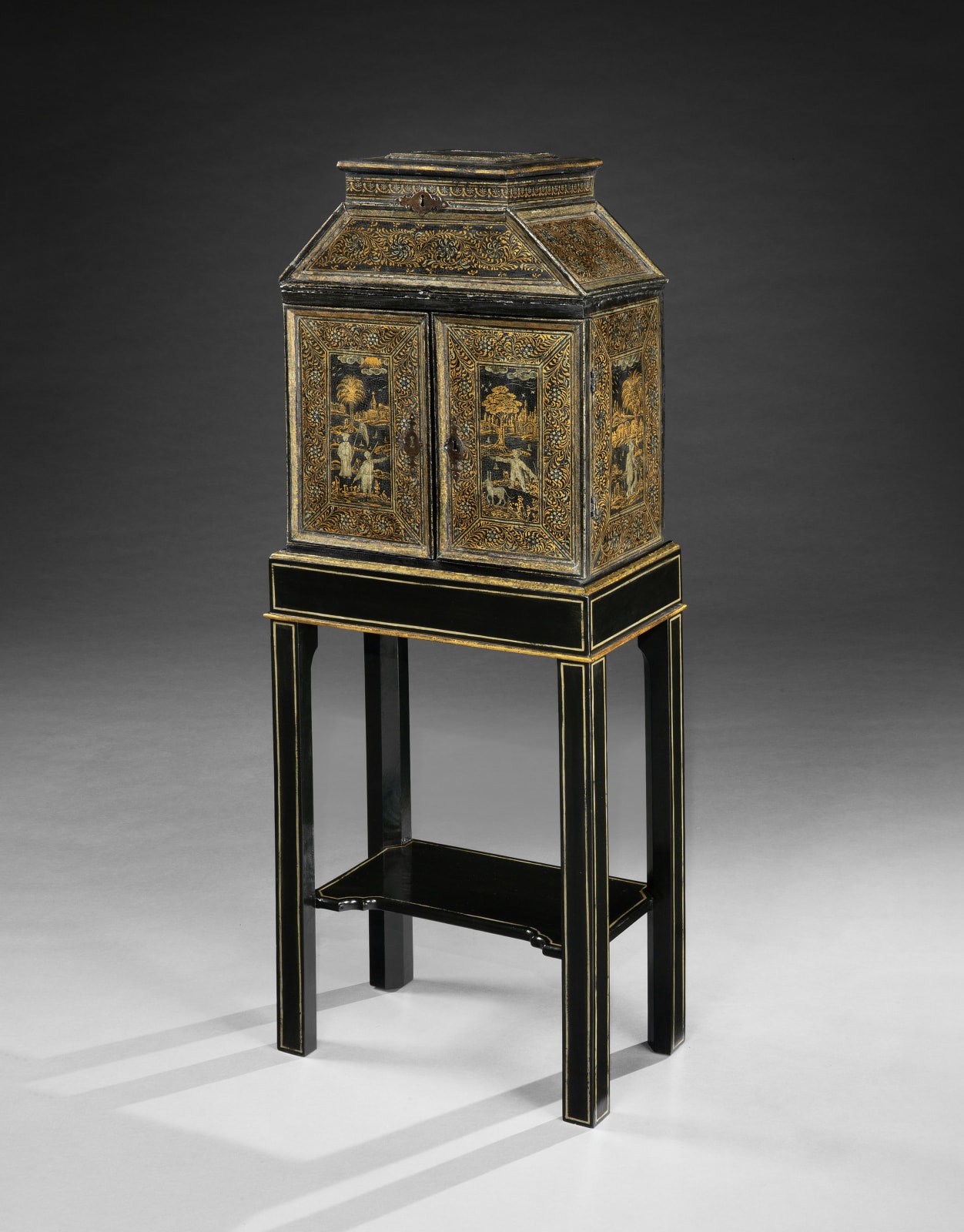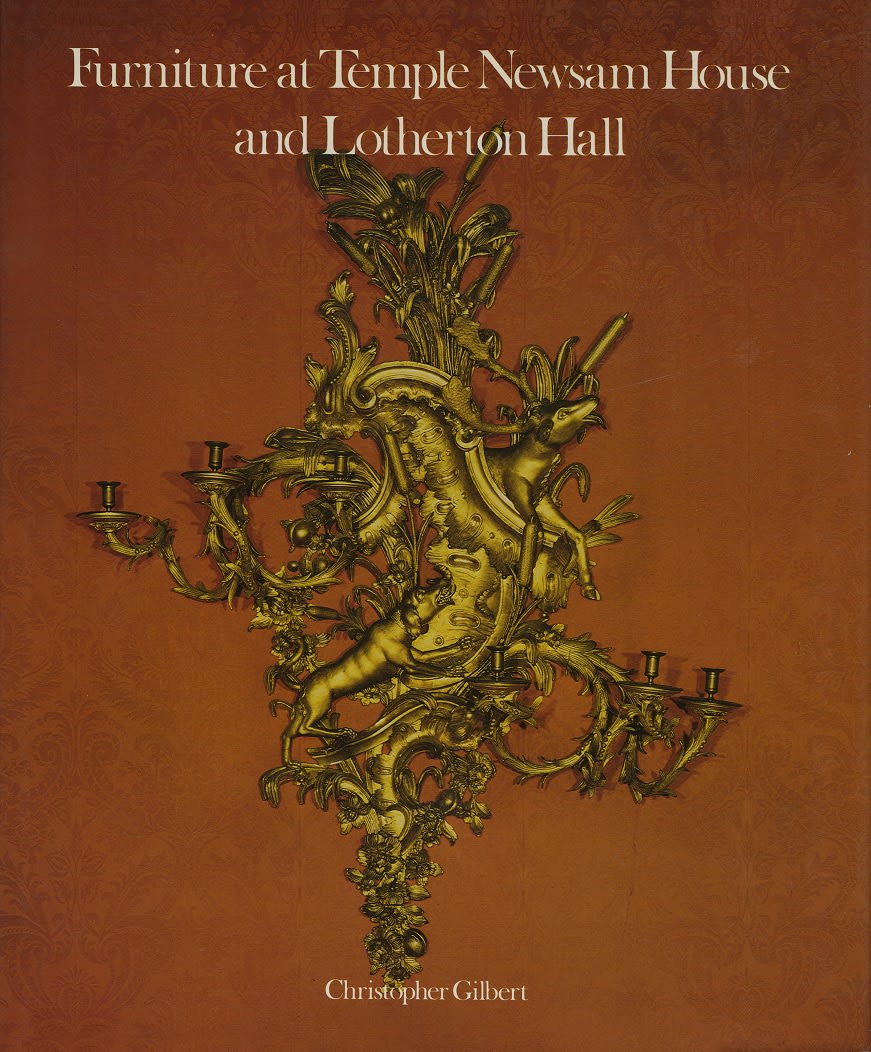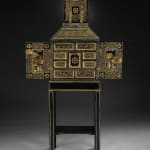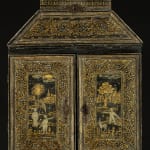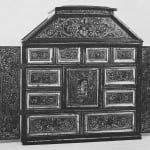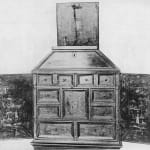
A cabinet from the group, Temple Newsam, Leeds, illustrated in Christopher Gilbert, Furniture at Temple Newsam House and Lotherton Hall, vol. I, 1998, p. 47.

A cabinet from the group, Victoria and Albert Museum, London, illustrated in Percy Macquoid and Ralph Edwards, The Dictionary of English Furniture, revised edition, 1954, vol. I, p. 162, fig. 1.
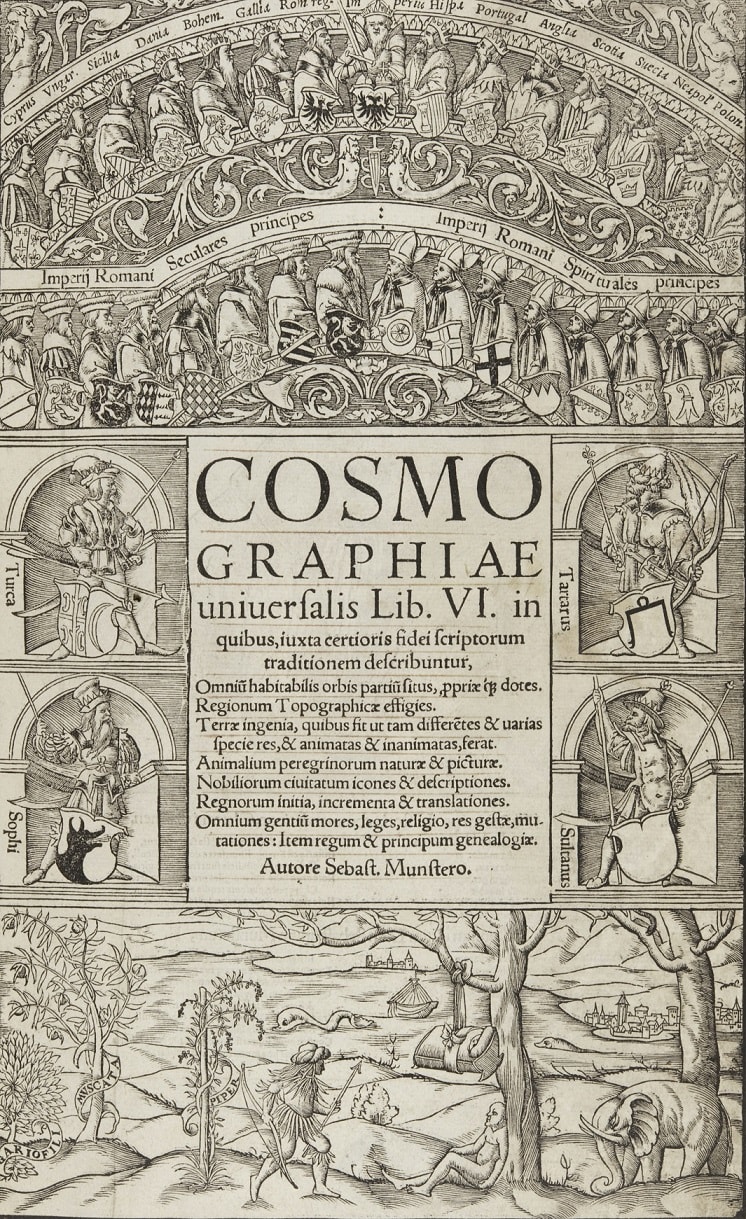
Title page, Sebastian Münster, Cosmographia Universalis, 1548
A JAMES I PERIOD JAPANNED CABINET ON STAND, The cabinet: European, circa 1620 The stand: American, 20th century
Width: 20 in; 51 cm
Depth: 11¼ in; 28.5 cm
Further images
This cabinet belongs to a small group of near-identical cabinets in museums and important collections around the world, including the Victoria and Albert Museum, London, England; Temple Newsam, Leeds, England; Melbourne Museum, Australia; and the Museum für Lackkunst, Münster, Germany.
All these cabinets are constructed from a mixture of hardwoods such as Baltic oak, elm and eucalyptus. This combination is very unusual, with eucalyptus not being used on any English furniture of the period. The decoration is very much in keeping with the early 17th century when Venice was at the forefront of fashion. Japanned pieces of furniture made in Venice around the first quarter of the century became very desirable among Europe’s elite.
The images on the japanned cabinet depict landscapes with rolling hills, lakes and buildings common in northern Europe. The gibbet in one is a reminder of the Thirty Years War which raged in Europe from 1618 until the Peace of Westphalia in 1648. The scenes depicted on each panel derive from the influential German publication Cosmographia Universalis by Sebastian Münster, first published in 1544, and translated into Latin, French, Italian, English and Czech between 1544 and 1628.
Scholars of English furniture have previously linked the decoration of this cabinet with a supposedly English ballot box commissioned by the East India Company and dated 1619, and with a set of similarly decorated roundels on a wooden box in the collection of the Victoria and Albert Museum, London. The roundels are datable by their use of poems that were published around the same time the ballot box was commissioned.
There is not enough concrete evidence to support English manufacture, however. The East India Company’s business was importing foreign luxury items to England, and their own ballot box would not have been an exception. The construction of the cabinets is generic, and it would be hard to pinpoint a country of manufacture. The choice of timbers is not characteristic of England, but nor does it suggest any other specific European country.
Given that several nearly identical versions of the cabinet exist, it is safe to say this cabinet is not a unique creation like the famous Augsburger Kunstschrank, a cabinet of curiosities presented to the King of Sweden in 1632 by the city of Augsburg. Similarly it is unlikely that the cabinet was intended for storing jewels or for writing purposes. Writing cabinets always have a writing surface in the form of either a fall-down front or a pull-out slide, while jewel cabinets tend to have mirrors fitted.
The design of this group of cabinets is generic, and the only difference between them is the centre, which is fitted with either a large drawer or a door. Adam Bowett suggests that they were intended as spice cabinets, which might explain the use of exotic eucalyptus wood, and also why several examples exist. The remnants of Latin inscriptions on the mouldings around the drawer fronts might refer to the original contents, possibly medicinal herbs.
Provenance
Private collection, USA.Literature
Percy Macquoid and Ralph Edwards, The Dictionary of English Furniture, revised edition, 1954, vol. I, p. 160, fig. 1.
Christopher Gilbert, Furniture at Temple Newsam House and Lotherton Hall, vol. I, 1998, pp. 46-7.
Adam Bowett, Woods in British Furniture-Making 1400-1900, 2012, p. 86.

